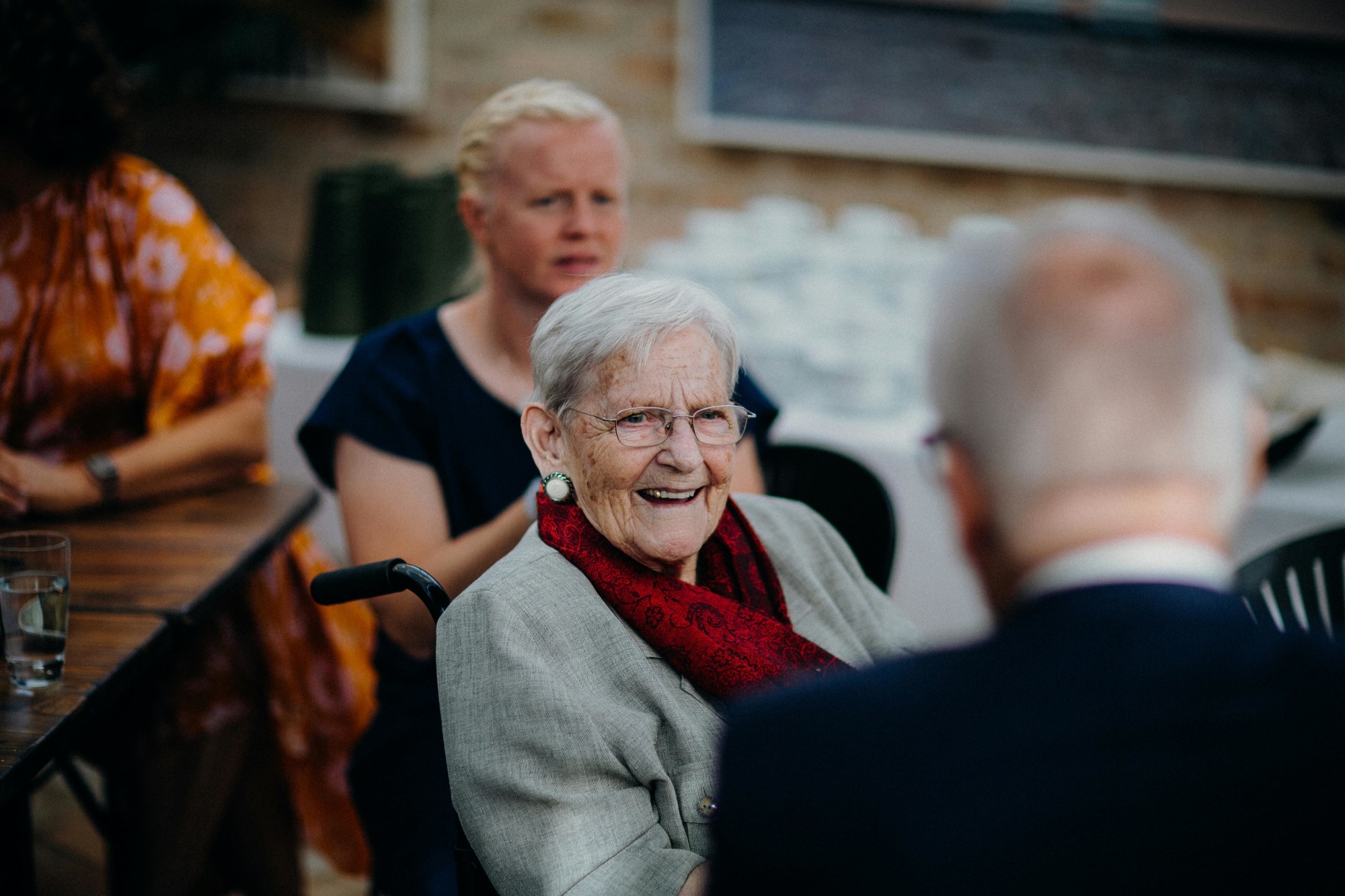Retirement
Shared parental leave key to boosting women’s retirement security
Looking to Scandinavian policies, a government gender equality agency has said encouraging men to take more parental leave could be part of the solution to the gender earnings gap.
Shared parental leave key to boosting women’s retirement security
Looking to Scandinavian policies, a government gender equality agency has said encouraging men to take more parental leave could be part of the solution to the gender earnings gap.

Women in Australia on average earn 23.1 per cent ($26,853) less than men when measuring full-time total remuneration earnings. However, 17 per cent of women's wages lost over their lifetimes is attributable to the cost of raising children, the Workplace Gender Equality Agency (WGEA) has said.
As such, “gender balanced paid parental leave” could reposition the financial burden of care more equitably, the agency argued.
According to the Department of Social Services’ Paid Parental Leave scheme review, 99.4 per cent of paid parental leave recipients in 2012-13 were women.
Noting this, WGEA said: “Paid parental leave has a positive impact on the financial position of women and families.

“It is during the years when many women are balancing paid work with unpaid caring responsibilities in the home that the gender pay gap widens considerably.
“Research by KPMG has shown that 21 per cent of the national gender pay gap is attributable to the years out of the workforce,” the Agency continued.
That 21 per cent hit is in addition to the 17 per cent loss in lifetime wages that women accrue as a by-product of taking time out of the workforce to care for children.
WGEA warned that the loss of earnings over the child-rearing period “arguably becomes irreversible”; no matter the circumstances of subsequent employment.
Further, according to figures from the Australian Bureau of Statistics, 82 per cent of mothers returning to the workforce take up part-time roles to allow for the child-care portion of their lives.
“The decisions to change jobs and work part-time following the addition of a new child often have a negative impact on women’s financial situation and future career opportunities.
“Gender balanced paid parental leave positively impacts on the financial security of women, relieving income pressure during the first months with a new child and supporting women’s return to the workforce.”
The WGEA arrived at this conclusion by comparing the Australian paid parental leave policy, employer policies and their respective uptakes with those of Denmark, Sweden, Iceland, Germany and the UK.
In Sweden parents are entitled to 480 days of paid parental leave to be taken until the child’s eighth birthday and three months of that leave are non-transferrable to the other parent. The WGEA argued that the policies which also see parents entitled to nearly 80 per cent of their income for 390 days have been crucial in seeing more men use their parental leave.
“Sweden has the second highest rate of men using parental leave across OECD countries and along with Denmark, Sweden has one of the highest female workforce participation rates at 76 per cent (Australia’s participation rate is 69 per cent).”
Similarly, Germany has a ‘Elterngeld’ or a salary substitute payment for the child’s first year of life, rather than a needs-tested 24-month payment.
“A salary substitute parental payment means that parental leave payment covers 67 per cent of after tax income and 100 per cent of income below Euro 1,000 a month,” the agency explained.
“The government pays ‘Elterngeld’ for up to 12 months or 14 months if the second parent takes a minimum of two months of parental leave. The two months have to be taken by the second parent and are not transferable, but will be lost if not taken.
“To strengthen the work-family compatibility, the ‘Elterngeld’ can be converted into a part-time payment, if parents return to work on a part-time basis.”
WGEA noted that since Elterngeld was introduced, the workplace participation for mothers with children between one and two years of age increased from 32 per cent in 2006 to 43 per cent in 2015.
Simultaneously, the proportion of men taking paid parental leave grew from 5 per cent in 2006 to 34 per cent in 2014, “leading to a lasting and more equal division of unpaid caring work”.
“Gender-balanced parental leave policies are a reflection of slowly disappearing gender-specific specialisations in paid and unpaid work,” WGEA said.
“Overall, in Australia the use of parental leave by fathers/partners remains really low. Yet, international comparison of utilisation data and parental leave policies show that the use of parental leave by fathers increases when entitlements are generous and when policies offer flexibility about when leave can be used.”

Retirement Planning
Retirement living sector calls for planning reforms amid declining construction confidence
The Retirement Living Council (RLC) is urging governments to streamline planning systems to boost housing supply, following a decline in confidence in age-friendly construction activity. Read more

Retirement Planning
New laws to boost women's retirement savings through paid parental leave
The Australian Parliament has passed new legislation that will see superannuation guarantee contributions paid on the Commonwealth Government's Paid Parental Leave (PPL) scheme. Read more

Retirement Planning
Planning systems under scrutiny as Australia's ageing population grows
The Retirement Living Council (RLC) has called for governments to address planning system shortfalls in preparation for Australia's ageing population, following the release of new data from the ...Read more

Retirement Planning
Retirement Living Council calls for focus on seniors' housing as population ages
The Retirement Living Council (RLC) has urged governments across Australia to prioritise age-friendly housing solutions in response to new data revealing an ageing population. Read more

Retirement Planning
Macquarie University study reveals benefits of guaranteed income in retirement
A new study by Macquarie University's School of Psychological Sciences has found that mental health, enjoyment, and financial security are key benefits of incorporating guaranteed income and annuities ...Read more

Retirement Planning
Retirement villages offer affordable housing amid market crisis, study finds
Retirement villages are providing a significantly more affordable housing option for older Australians compared to the traditional property market, according to new data released today. Read more

Retirement Planning
Age-appropriate housing could reduce hospitalisations for elderly Australians, report finds
A new report from the Australian Institute of Health and Welfare (AIHW) has highlighted the potential benefits of age-friendly housing in reducing hospitalisations among older Australians. Read more

Retirement Planning
Retirement Living Council urges focus on seniors' housing as population ages
The Retirement Living Council (RLC) has called for a renewed focus on retirement villages as a key housing solution to cater for Australia's ageing population, following the release of fresh ...Read more

Retirement Planning
Retirement living sector calls for planning reforms amid declining construction confidence
The Retirement Living Council (RLC) is urging governments to streamline planning systems to boost housing supply, following a decline in confidence in age-friendly construction activity. Read more

Retirement Planning
New laws to boost women's retirement savings through paid parental leave
The Australian Parliament has passed new legislation that will see superannuation guarantee contributions paid on the Commonwealth Government's Paid Parental Leave (PPL) scheme. Read more

Retirement Planning
Planning systems under scrutiny as Australia's ageing population grows
The Retirement Living Council (RLC) has called for governments to address planning system shortfalls in preparation for Australia's ageing population, following the release of new data from the ...Read more

Retirement Planning
Retirement Living Council calls for focus on seniors' housing as population ages
The Retirement Living Council (RLC) has urged governments across Australia to prioritise age-friendly housing solutions in response to new data revealing an ageing population. Read more

Retirement Planning
Macquarie University study reveals benefits of guaranteed income in retirement
A new study by Macquarie University's School of Psychological Sciences has found that mental health, enjoyment, and financial security are key benefits of incorporating guaranteed income and annuities ...Read more

Retirement Planning
Retirement villages offer affordable housing amid market crisis, study finds
Retirement villages are providing a significantly more affordable housing option for older Australians compared to the traditional property market, according to new data released today. Read more

Retirement Planning
Age-appropriate housing could reduce hospitalisations for elderly Australians, report finds
A new report from the Australian Institute of Health and Welfare (AIHW) has highlighted the potential benefits of age-friendly housing in reducing hospitalisations among older Australians. Read more

Retirement Planning
Retirement Living Council urges focus on seniors' housing as population ages
The Retirement Living Council (RLC) has called for a renewed focus on retirement villages as a key housing solution to cater for Australia's ageing population, following the release of fresh ...Read more








